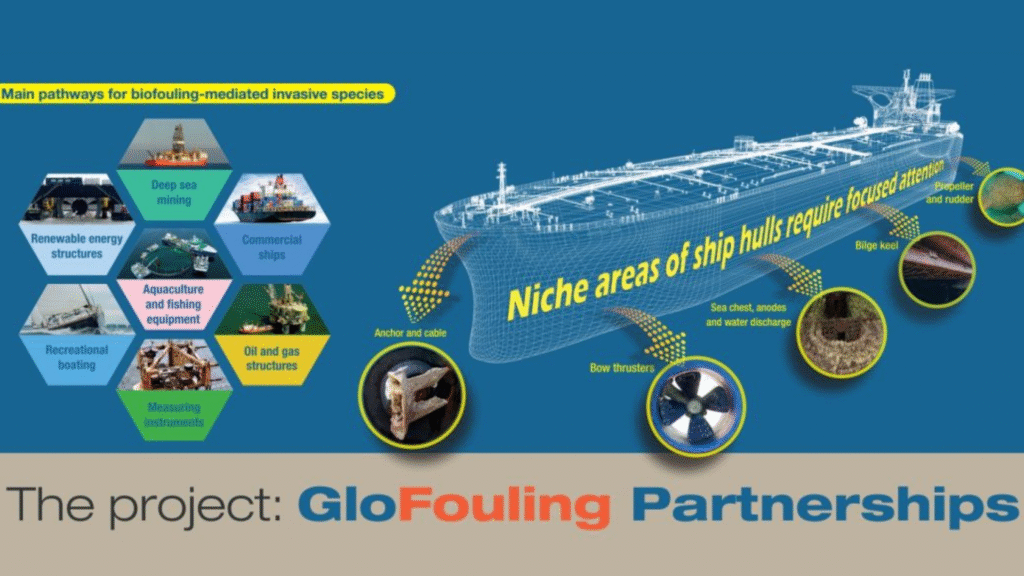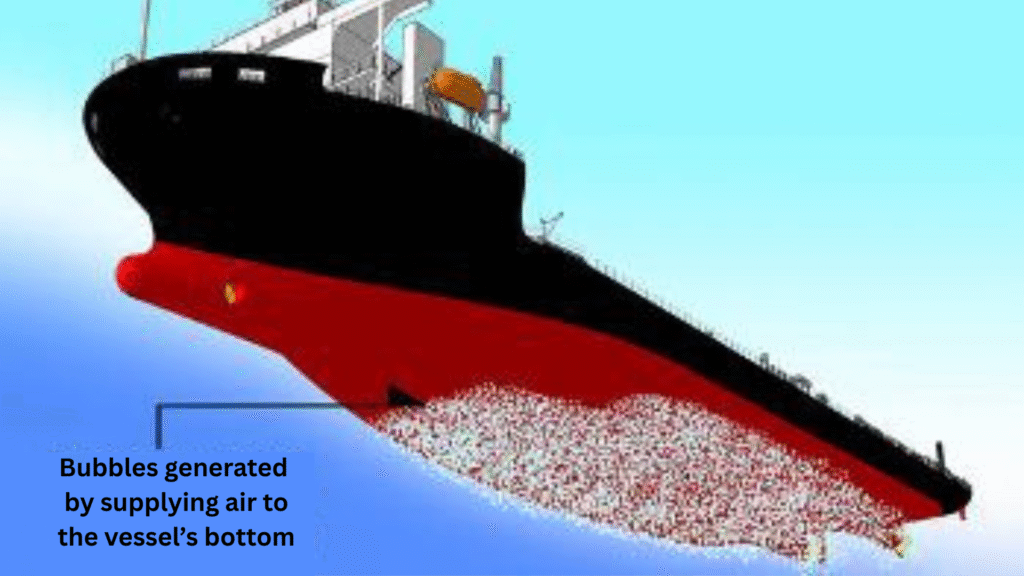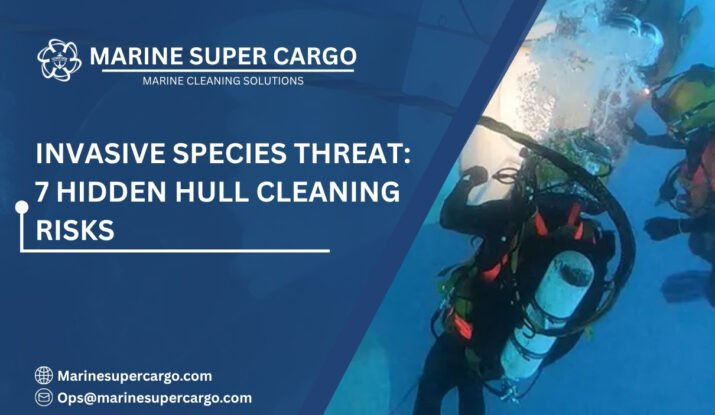Have you ever thought of a ship’s hull as a floating garden? Beneath the surface, many vessels unintentionally carry stowaways — aquatic organisms that cling to their hulls and hitch rides across oceans. These invasive species are more than just unwanted passengers. They can damage ecosystems, harm fishing industries, and lead to costly fines and repairs. And it all starts with one process you might consider routine: hull cleaning.
In this article, we’ll explore hull cleaning risks, how the transfer of invasive species happens, and what ship owners, operators, and managers like you can do to prevent it. Whether you oversee a small fleet or manage massive commercial vessels, understanding this issue is critical for compliance, operational efficiency, and environmental responsibility.
Why Hull Cleaning Matters
Think of a ship’s hull as its invisible energy meter. The smoother and cleaner it is, the less fuel the ship consumes. However, biofouling — the buildup of algae, barnacles, and other organisms — inevitably occurs.
Hull cleaning is essential for:
- Reducing drag and fuel consumption
- Preventing corrosion and structural damage
- Ensuring compliance with international environmental standards
- Avoiding the transfer of invasive species
Yet, here’s the catch: while cleaning removes fouling, it can unintentionally make matters worse if not done properly.
The Hidden Risk: Invasive Species Transfer
When fouling organisms are scraped off during cleaning, fragments and larvae often disperse into the surrounding waters. If these organisms are invasive species, they may thrive in new habitats, outcompete native species, and disrupt entire ecosystems.
To put it simply: cleaning isn’t just scrubbing. It’s a potential ecological gamble.
The International Maritime Organization (IMO) has recognized this growing concern. Improper hull cleaning is no longer seen just as poor maintenance — it’s a regulatory and environmental red flag.

Hull Cleaning Risks You Need to Know
Let’s break down the risks associated with hull cleaning and how they relate to invasive species:
- Ecological Imbalance
Organisms dislodged during cleaning can colonize foreign ecosystems, wiping out native marine life. - Regulatory Non-Compliance
Authorities like IMO and MARPOL enforce strict rules to prevent invasive species transfers. Non-compliance can lead to hefty fines and vessel detentions. - Economic Fallout
Fisheries, aquaculture industries, and even tourism can collapse when invasive species spread unchecked. In turn, ship operators can face liability. - Increased Resistance
Some invasive species are resilient. When transported repeatedly, they adapt, making local eradication efforts nearly impossible. - Operational Downtime
Improper cleaning methods may cause delays, especially if authorities require re-cleaning or inspection. - Structural Risks
Over-aggressive cleaning can damage antifouling coatings, making the hull more susceptible to faster regrowth — and increased risk of invasive spread. - Reputational Damage
Shipping companies linked to invasive species outbreaks face not only penalties but also reputational loss in a highly sustainability-focused industry. Learn more.
Case Study: The Lionfish Invasion
Consider the lionfish in the Caribbean. Believed to have spread partly due to ballast water and hull fouling transfer, these fish devastated local reefs by preying on native fish and reproducing at alarming rates. The ecological and economic loss was profound.
Now imagine dealing with a similar scenario tied directly to your vessel’s hull. The implication is clear: invasive species transfer through poor cleaning practices is not just hypothetical — it’s happening.
Compliance and Best Practices
So, how can you navigate this tricky balance between maintaining efficiency and preventing invasive species spread? Organizations like IMO, IMCA, MARPOL, and IAPH provide clear guidelines. Here are the best practices based on their recommendations:
- Use in-water hull cleaning systems equipped with filtration to capture biofouling waste.
- Ensure coatings and antifouling paints are applied and maintained.
- Avoid high-risk operations in sensitive marine zones (marine protected areas, fisheries).
- Train crew and subcontractors on environmentally safe hull maintenance.
- Schedule hull cleaning at shore facilities equipped to handle waste responsibly.
By implementing these steps, you reduce compliance risks while protecting both business interests and delicate ecosystems.
The Cost-Saving Angle
Here’s some good news: managing hull fouling doesn’t just protect the environment. It saves you money. Biofouling can increase drag by up to 40%, raising fuel consumption significantly. Studies show that clean hulls improve efficiency by 10–15%, sometimes more.
So when you adopt invasive species prevention strategies, you’re not just doing the right thing for the oceans — you’re cutting costs and staying competitive.
Future Trends in Hull Cleaning
The shipping industry is rapidly evolving, and hull cleaning practices are keeping pace with technological and environmental demands. Modern operators are no longer relying solely on manual or reactive methods. Instead, the focus is shifting toward smarter, greener, and safer solutions that maximize efficiency, reduce environmental impact, and comply with global regulations. Here’s a closer look at the trends shaping the future of hull maintenance:
1. Robotic Hull Cleaning Drones
Automation is revolutionizing underwater maintenance. Robotic hull cleaning drones are being developed to clean ship hulls continuously and autonomously. These drones reduce the need for divers in hazardous conditions, capture waste efficiently, and ensure thorough removal of biofouling. Some drones are equipped with real-time sensors and AI-powered navigation, allowing them to target fouling hotspots and optimize cleaning schedules without disrupting port operations. This not only increases fuel efficiency and hull condition but also minimizes operational downtime.
2. Advanced Anti-Fouling Coatings
The next generation of hull coatings leverages nanotechnology and biomimetic designs to prevent organisms from attaching to vessel surfaces. Inspired by shark skin and lotus leaves, these coatings create ultra-slick surfaces that make it difficult for barnacles, algae, and slime to adhere. Some coatings are self-polishing or environmentally friendly, releasing minimal biocides while maintaining long-term performance. By slowing fouling buildup, these coatings extend the interval between cleanings, improve hydrodynamic efficiency, and reduce fuel consumption.
Also read: Underwater Ship Hull Cleaning in Ecuador
3. Data-Driven Monitoring and Predictive Tools
Digitalization is an enabling condition for maintenance in the maritime industry. Sensors, IoT devices, and AI-powered analytics are now used to continuously monitor hull roughness, speed, fuel efficiency, and biofouling levels. By analyzing vessel routes, water temperatures, salinity, and other environmental factors, operators can predict fouling risks and schedule preventive cleaning more strategically. Predictive maintenance not only saves money but also ensures compliance with IMO biofouling guidelines and MARPOL Annex V regulations.
4. Eco-Friendly and Sustainable Practices
Sustainability is at the core of future hull cleaning trends. Companies are investing in waste capture systems, waterless cleaning tools, and eco-certified antifouling solutions. These measures reduce the release of invasive species and coating debris into port waters, aligning with global environmental regulations. By combining sustainability with performance, shipping companies are achieving both regulatory compliance and operational savings.

5. Integration with Digital Ship Management
Hull cleaning is increasingly part of a digital fleet management ecosystem. Advanced software platforms integrate hull condition data with fuel efficiency metrics, voyage planning, and emissions reporting. This holistic approach allows shipowners to make data-driven decisions that optimize speed, reduce fuel consumption, and maintain fleet compliance with international standards.
Conclusion
If hull cleaning is done without environmental responsibility, it can accelerate the spread of invasive species. By adopting best practices, you’ll ensure:
- Compliance with IMO, IMCA, MARPOL, and IAPH frameworks.
- Reduced long-term maintenance and fuel costs.
- Protection of marine biodiversity and your reputation.
Our oceans are shared highways — and the responsibility lies with all of us. Next time you plan hull cleaning, think beyond drag and fuel. Think about the creatures hitching rides.
For environmentally responsible hull cleaning solutions that protect ecosystems while saving money, visit CleanShip.co.
FAQs:
Q1. What are invasive species in shipping?
Invasive species are non-native organisms that attach to ships’ hulls or ballast water and spread into new environments, disrupting ecosystems.
Q2. How does hull cleaning spread invasive species?
During cleaning, biofouling organisms may be released into local waters. If they survive and multiply, they can overtake ecosystems.
Q3. What regulations govern invasive species transfer?
Authorities like the IMO, MARPOL, and IAPH set protocols for safe hull cleaning and fouling management to reduce risk.
Q4. Can hull cleaning save fuel costs?
Yes. A clean hull reduces drag, improving fuel efficiency by up to 15% and lowering emissions.
Q5. What’s the future of safe hull cleaning?
Innovations like robotic cleaning drones, advanced anti-fouling paints, and real-time monitoring will make hull maintenance safer and more sustainable.


